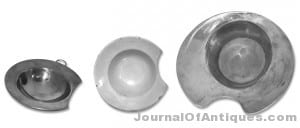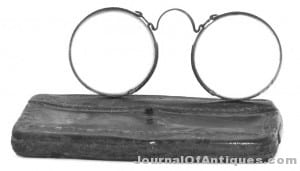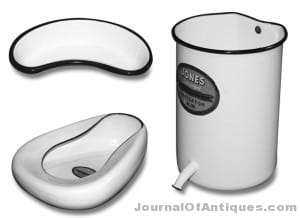The Business of Doing Business in Antiques
Selling the Things That Sell
By Ed Welch
In the real world, most businesses sell the things that are easy to sell. Look around your hometown, count the number of fast food restaurants, count the number of high-end expensive restaurants-cheap wins every time regardless of the income level of the community. Do the same for hardware stores, clothing stores, and do not forget Wal-Mart. Cheap sells easier than expensive. If you want to make money in business, sell the cheap stuff.

Wal-Mart has made a major business mistake in building too many Super Size Stores. The trend today is for smaller shopping malls with small shops that are cheaper to own and to operate. Across America large shopping malls are being demolished in favor of smaller size stores with more parking. (See, the Wall Street Journal, August 29, 2012 for more on “Smaller Is the New Order”).
Dealers should take a hard look at their current inventory. Is it small enough and liquid enough to be quickly sold and replaced? In today’s marketplaces trends change quickly and what sells today may not sell tomorrow. Can you change ( are you willing to change?) your stock to meet new demands? Is your inventory like a tool, say a hammer, used to pound a nail? Is your inventory more of a token of victory, used to show off success, wealth, and your good taste? If you are in the antiques trade to make money, your inventory must be a tool. You should not have any emotional or physical attachments to it.

Luxury selling demands deep pockets and major financial backing. If you do not have a lot of money at your disposal, stay away from high priced merchandise. The low and mid-range antiques markets each have their own set of rules and regulations. If you sell low-end items, you must obey the rules and regulations of that marketplace. If you run a mid-level antiques business, you must obey the rules of that marketplace.
The rules for running a low-end antiques business are the same for all low-end businesses, with individual differences. Because each individual is unique, every individually owned business is bound to be slightly different than all others. However, all businesses on the same level are bound by the same set of rules and regulations. These include the highest priced items that the business will carry, the lowest priced items, the highest purchase price allowed, number of items in stock, total value of the inventory, and product turnover time.

For example, I buy an item commonly sold at shows between $25 and $35. I sell this item for three times the buying price. If I pay $25, I sell at $75; If I pay $30, I sell at $90-I cannot pay $35 for this item. Experience has taught me that I cannot sell this item for $105. The extra $5 cost is a big deal, in fact, it is a deal breaker. In order to sell this overpriced purchase, I must take a $15 cut in pay. Why should I work for less money next week than I make this week? Will you take a $15 cut in pay starting next week?
Overpaying for even one item is the start of a bad habit. Your business will recover from the mistake of overpaying for one or two items. However, if you constantly overpay, you will put yourself out of business. If the buying limit of a given item is $25, the limit is $25 and not one cent more!
If you feel that you no longer want to deal in the level of antiques you are now in, and that you are financially able to pay the cost of operating a higher level business, and have enough money put aside to pay for a higher level business, draw up a business plan and create the rules and regulations needed to successfully run a higher level business.
Ed Welch, Antiques Dealer and Monthly Contributor of “The Business of Doing Business” to The Journal of Antiques and Collectibles Passed Away October 7







Pingback: Ed Welch, Antiques Dealer and Monthly Contributor of “The Business of Doing Business”, Passed Away October 7 - The Journal of Antiques and CollectiblesThe Journal of Antiques and Collectibles